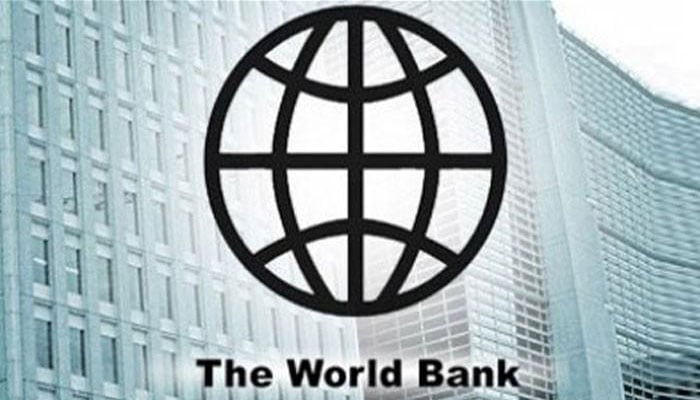Covid-19 scourge: World Bank projects rising public debt, increasing poverty
The WB released Pakistan Development Update on Tuesday and said that the country's Public and Publicly Guaranteed Debt (PPGD) to-GDP ratio is projected to peak at 94.4 percent of GDP by end-FY22 on account of elevated fiscal deficits, before easing to 94.1 percent of GDP by FY23.
ISLAMABAD: While presenting a dismal picture about Pakistan’s economy, the World Bank has projected rising public debt, increasing poverty, and low GDP growth in the range of 1.3 percent for the current fiscal year.
The WB released Pakistan Development Update on Tuesday and said that the country's Public and Publicly Guaranteed Debt (PPGD) to-GDP ratio is projected to peak at 94.4 percent of GDP by end-FY22 on account of elevated fiscal deficits, before easing to 94.1 percent of GDP by FY23. “The decline in the PPGD-to-GDP ratio will be mainly due to moderately higher economic growth and declining primary deficits” the WB made it clear.
Resurgence of Covid-19 infection rates and slow vaccination poses risks to the economic outlook. Prolonged high food inflation can increase risks to food security. Structural reforms remain critical to macroeconomic stability. Priority reforms include the institutionalization of fiscal and debt management functions at the federal level, GST harmonization, implementation of the Circular Debt Management Plan in the power sector, competitiveness-enhancing reforms to increase private investment, and tariff reforms to encourage exports.
Pakistan’s missing merchandise exports are estimated at US$ 61 billion. This results from comparing actual estimated that Pakistan’s potential exports are at $ 88.1 billion, about 4 times the actual current level. This large gap between actual and potential exports, or “missing exports”. The opportunity cost of Pakistan’s “missing exports” is estimated at 893,000 jobs and $ 1.74 billion in foregone taxes. Of these, 152,000 jobs could be created in the agriculture export sector, and 741,000 jobs could be created in the manufacturing export sector.
While some of these jobs could be newly created, others may reallocate from labor of relatively lower productivity, domestic-oriented firms, to higher productivity, export-oriented firms. In terms of foregone tax revenue, a back-of-the-envelope calculation suggests that realizing the export potential would bring an additional $ 1.74 billion in direct tax revenues annually, taking into account Pakistan’s value added share in gross exports, as well as the implicit direct tax rate across sectors. About public debt, the WB states that public debt remains elevated, as do fiscal risks from debt servicing. Pakistan’s public and publicly guaranteed debt (PPGD) stood at 93.6 percent of GDP at end June 2020—3.7 percentage points higher than end-June 2019.
Of the net change in general government debt in FY20, an increase of around 27 percent came from the financing of the federal primary deficit, approximately 71 percent came from interest paid on debt, and 11 percent was due to currency depreciation, whereas a decrease of around 8 percent occurred due to other factors.
At end-H1 FY21, PPGD was recorded at 87.9 percent of annual GDP, compared to 86.7 percent of GDP at the end of H1 FY20. Of the total public debt at end H1 FY21, short-term debt was 13.0 percent whereas external debt had a share of 35.1 percent. However, the debt level remains in breach of the Fiscal Responsibility and Debt Limitation Act (FRDLA) 2005 (amended in 2017), which mandated a reduction of total public debt to 60 percent of GDP by FY18.97. The public debt-to-GDP ratio is expected to remain elevated over the medium-term, increasing Pakistan’s exposure to debt-related shocks. In addition, fiscal risks from debt servicing remain high.
Pakistan was already grappling with a period of economic adjustment under the IMF-EFF program when the pandemic struck. The lock down imposed in the Spring 2020 brought economic activity to a near halt. According to a recent nationally representative survey by the Pakistan Bureau of Statistics, half of Pakistan’s workforce was severely hit by the crisis. It is estimated that 20.7 million workers (37 percent of the total) lost their jobs and an additional 6.7 million workers (12 percent) saw a decline in their labor income between April and July 2020. The Covid-19 shock had a severe impact on informal and low-skilled workers in elementary occupations facing the strongest contraction in employment. The construction sector suffered the heaviest with 80 percent of its workers lost their jobs or had reductions in income.
Pakistan’s poverty rate in FY20 is expected to have increased for the first time in two decades due to Covid-19. Simulation results indicate that poverty in FY20, might have increase by 2.3 percentage points, which translates into 5.8 million additional people falling into poverty as a result of the pandemic. After two decades of uninterrupted decline in poverty, the Covid-19 pandemic is expected to not only increase poverty, but also worsen the depth and severity of poverty as indirectly demonstrated by the increase in severely food insecure population, which stood at 10 percent during the lockdown phase, compared to 3 percent at the baseline.
Pakistan’s economic growth is expected to reach 1.3 percent in FY2021 and strengthen to an average of 2.7 percent for FY2022-23, according to the Pakistan Development Update. The baseline economic growth forecast, however, is highly uncertain, especially given the third and more-contagious wave of the pandemic currently circulating in the country.
Private consumption is estimated to have picked up over July to December 2020, in part due to the record increase in remittances inflows, social assistance support from the Ehsaas program, the government’s construction package, and a return to pre-Covid-19 mobility levels from September 2020. Investment is also estimated to be recovering, as machinery imports and cement sales both recorded double-digit growth rates during this period.
“It is crucial to sustain the positive reform momentum to boost the competitiveness of Pakistan’s economy and lay a strong foundation for a more robust, inclusive and sustainable recovery,” said Najy Benhassine, World Bank Country Director for Pakistan. “Increasing competitiveness and stimulating private investment and exports will require continued macroeconomic stability, maintenance of a market-determined exchange rate, and improving the business environment to enable all firms, particularly SMEs, to access markets and compete openly in a level playing field. The potential for a strong recovery and a growth acceleration is there. Reforms to make it happen need to be further sustained.”
“Despite some recovery in the private sector, many firms remain vulnerable and require support to prevent closures and further job losses. Policy measures that prevent permanent firm closures and further job losses will contribute significantly to sustaining the recovery,” said Derek H. C. Chen, World Bank Senior Economist for Pakistan.
-
 Piers Morgan In Hospital: Here's Why
Piers Morgan In Hospital: Here's Why -
 IPhone 18 Pro Leaked: New Design Reveals Radical Corner Camera Layout
IPhone 18 Pro Leaked: New Design Reveals Radical Corner Camera Layout -
 Kung Fu Legend Siu-Lung Leung Passes Away At 77
Kung Fu Legend Siu-Lung Leung Passes Away At 77 -
 Kim Kardashian To Remove Ex Kanye West From Her Kids' Names
Kim Kardashian To Remove Ex Kanye West From Her Kids' Names -
 Queens Mother Arrested After Abducting Child From Court-ordered Visit
Queens Mother Arrested After Abducting Child From Court-ordered Visit -
 Sarah Ferguson Ready To ‘spread Her Wings’ After Separating From ‘disgraced’ Andrew
Sarah Ferguson Ready To ‘spread Her Wings’ After Separating From ‘disgraced’ Andrew -
 Finn Wolfhard Shares How Industry Views Him Post 'Stranger Things'
Finn Wolfhard Shares How Industry Views Him Post 'Stranger Things' -
 Dylan O'Brien Gets Nostalgic After Reunion With Old Friend
Dylan O'Brien Gets Nostalgic After Reunion With Old Friend -
 UK Doctors Warn Screen Time Is Harming Children’s Health
UK Doctors Warn Screen Time Is Harming Children’s Health -
 Meghan Markle To Get Police Protection In UK If Travelling With Archie, Lilibet
Meghan Markle To Get Police Protection In UK If Travelling With Archie, Lilibet -
 Spencer Pratt Expresses Hope For Taylor Swift, Travis Kelce's Wedding Invite
Spencer Pratt Expresses Hope For Taylor Swift, Travis Kelce's Wedding Invite -
 Evan Peters Makes Unexpected Confession About 'American Horror Story' Season 13
Evan Peters Makes Unexpected Confession About 'American Horror Story' Season 13 -
 Kentucky Grandmother Arrested After Toddlers With Broken Skulls, Ribs
Kentucky Grandmother Arrested After Toddlers With Broken Skulls, Ribs -
 European Space Agency Hit By Cyberattack, Hundreds Of GBs Data Leaked
European Space Agency Hit By Cyberattack, Hundreds Of GBs Data Leaked -
 Elon Musk’s XAI Launches World’s First Gigawatt AI Supercluster To Rival OpenAI And Anthropic
Elon Musk’s XAI Launches World’s First Gigawatt AI Supercluster To Rival OpenAI And Anthropic -
 Google Adds On-device AI Scam Detection To Chrome
Google Adds On-device AI Scam Detection To Chrome




